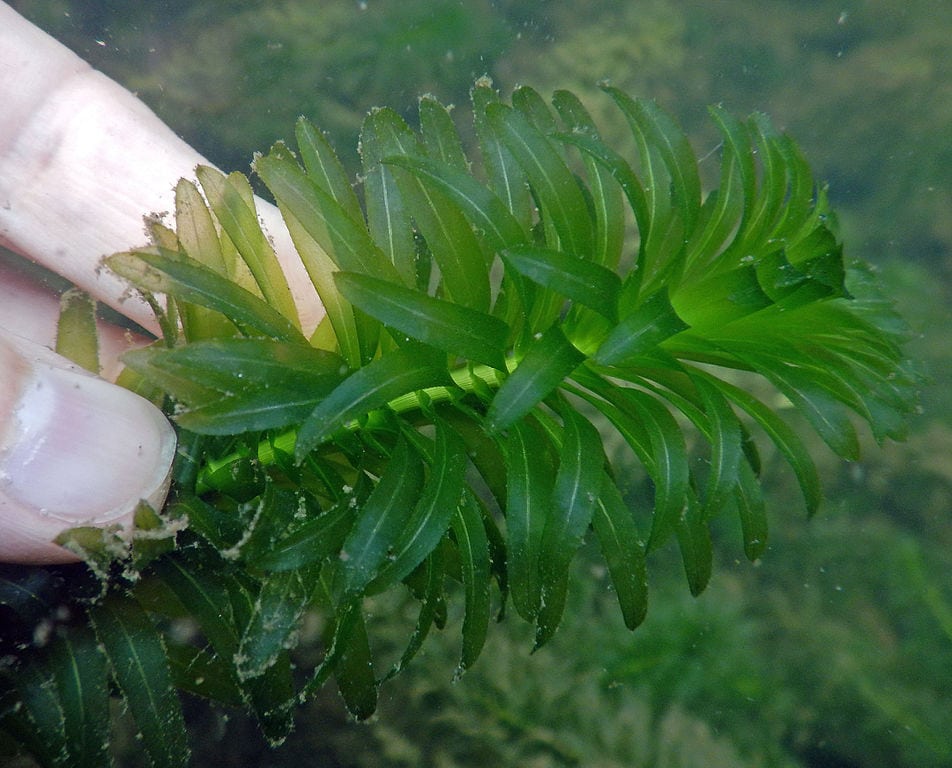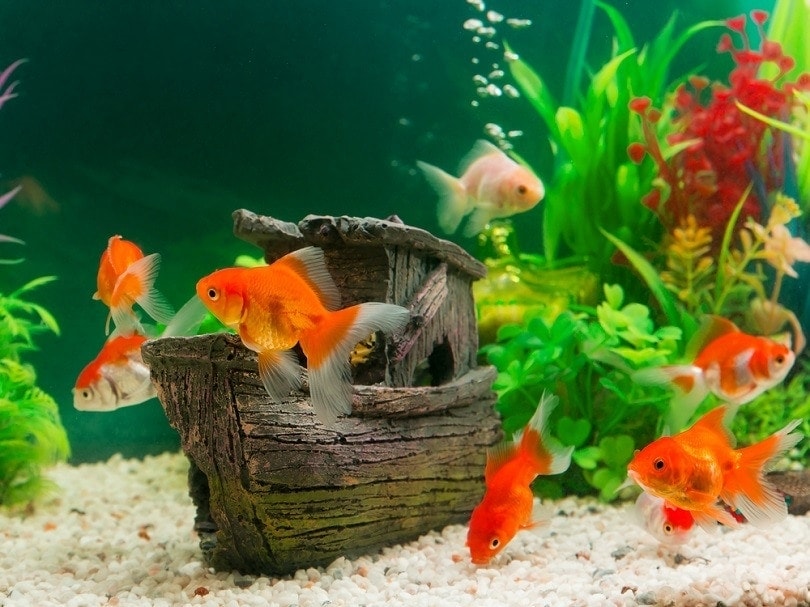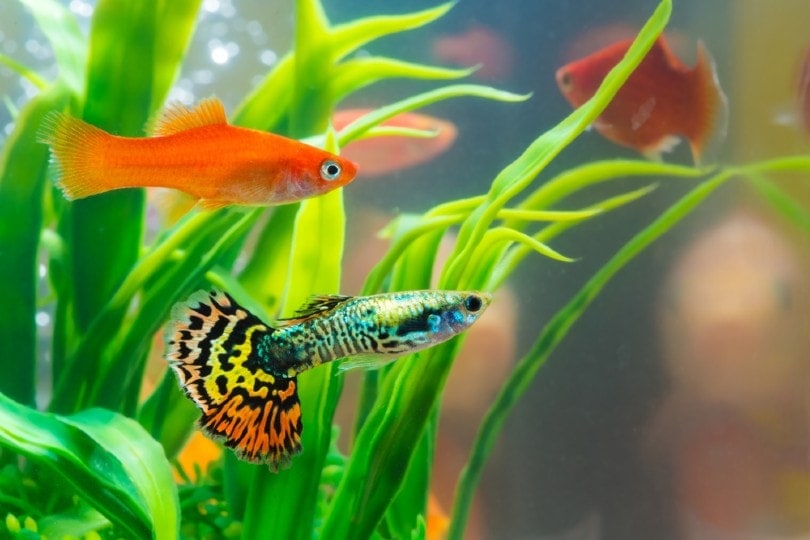Anacharis Aquarium Plant: Complete Care & Propagation

Updated on

Anacharis, also known as Elodea or waterweeds, makes an exceptional addition to your planted aquarium. Anacharis has a delightful dark green coloration and an intricate pattern of leaf blades growing from the stems of the plant. It’s an ideal aquarium plant for a variety of water conditions, as it is quite hardy. In a pet store, you will most likely buy them in a bunch, as each stem has its own white, string-like roots flowing into the substrate or occasionally above ground level.
Anacharis is suitable for beginners and is generally easy to care for. Interestingly enough, anacharis is able to withstand a wide variety of fluctuating temperatures, making it an ideal plant for either tropical heated aquariums or even cold-water aquariums.
Anacharis prefers a hard pH and is suitable for aquariums that receive daily moderate lighting. You can control the growth rate of anacharis by monitoring the conditions it is kept under, fertilizers and CO2 will increase the growth rate, while limiting this will result in a much slower and steady growth.
Useful Information About the Anacharis
| Family Name: | Hydrocharitaceae |
| Common Names: | Elodea, Anacharis, waterweed |
| Origin: | Argentina, Uruguay, and Southeast Brazil |
| Color: | Dark green |
| Size: | 6 to 8 inches or 15 to 20 cm |
| Growth Rate: | Rapid |
| Care Level: | Beginner |
| Lighting: | Moderate |
| Water Conditions: | Able to survive a variety of water conditions |
| Minimum Tank Size: | 10 gallons |
| Supplements: | Fertilizers and C02 (optional but not required) |
| Placement: | Back of the aquarium |
| Propagation: | Cutting a stem off from a healthy plant and either floating or planting in substrate |
| Compatibility: | Grows well with smaller plants that do not block out lighting such as floating plants or compete for nutrients |
Anacharis Appearance
This attractive plant has colorations that depend on the conditions of your aquarium’s water, from a light green to a deep lush green. Anacharis grows vertically, so it is ideal for aquariums on the taller side. The long cylindrical stems have nodes that usually grow a whorl of 3 to 6 individual leaves.
When the plant reaches a certain length, the top of the stem usually reaches the waterline and grows a beautiful white three petal flower that floats at the surface.
Kept in well-maintained water conditions, anacharis has the potential to grow to up to a whopping 3 feet tall, although this is uncommon in your usual aquariums as most tanks are not able to support the height. Regular trimming once a month can keep your plant at the desired height. It is common to see white, string-like roots growing from the base of the individual tubular stems or even roots that dangle in the water from the middle of the stem.

Where to Find It
Most local pet stores that sell aquarium products will have anacharis in stock. Make sure to choose a healthy plant before you make a purchase. The stems should not be limp or discolored; the leaves should be a green coloration and not fall off in the water if you were to gently touch it. Another choice is to order anacharis from a reputable online source, although it is not guaranteed you will receive a healthy plant. If the anacharis you ordered is dead or not revivable, the online store should send you a refund or replacement.
General Care
Anacharis is quite an easy plant to provide and care for, and are hardy enough to survive most beginner or even intermediate aquarists’ mistakes, which include fluctuating temperatures, poor water conditions (high ammonia and nitrite), and even an uncycled tank.
The anacharis plant grows vertical, light, or dark green stems with 3 to 6 whorls of leaves from the nodes, and it’s important the leaves receive enough light. The smaller propagated anacharis plants will struggle to receive sufficient light and sunlight if the taller stems are outgrowing them.
- C02 or aquarium plant fertilizers are not required for most aquariums (although it is advised to add in low doses to a tropical tank) and your anacharis can thrive without the supplements, although these extras will result in rapid growth if that is the result you want to obtain.
- Anacharis does not do well in shaded ponds, as the light for photosynthesis is essential in maintaining a healthy anacharis
Habitat, Tank Conditions & Setup
Tank/aquarium size
Anacharis are rapidly growing aquarium plants, unless you can keep up with regular trimming in a smaller tank, it’s ideal to keep anacharis in an aquarium no smaller than 10 gallons. Although they can grow well in smaller aquariums, it’s generally tedious to keep up with the growth maintenance. It is ideal to keep anacharis in taller tanks since they prefer to grow vertically and are more likely to overrun a low tank.
Water Temperature and pH
Anacharis are widely known for their ability to handle a vast variety of water temperatures, from as low as 60ºF to 80ºF, making them able to live in both tropical and cold-water aquariums within the recommended temperature range between 72ºF to about 78ºF. It is ideal to avoid frequent fluctuating temperatures as this will put the plant into shock and affect growth rate and general health. Anacharis thrive in a pH of 6.5 to 7.5, which is found in hard water aquariums.

Substrate
Anacharis does well in sand, gravel, or even bare-bottom aquariums (where it will float and grow roots anywhere on the stem). If you are planting the anacharis in a substrate, it should root into the sand or gravel. If you plan on having a bare bottom tank, you can hook the plant to objects or the glass via clip-on suction cups.
Plants
Anacharis is compatible with plants that do not float and block out light from entering the tank. Adding too many plants to the aquarium can cause the plants to compete for essential nutrients.
Lighting
Both natural and artificial lighting are suitable for helping your anacharis thrive. They require moderate lighting and seem to struggle in extreme lighting conditions, as well as develop poor growth and health when kept in inadequate light conditions.
Filtration
Anacharis is excellent at maintaining good water conditions, this plant catches debris and particles in the water and absorbs ammonia and nitrates produced by the aquarium inhabitants, this makes it great for tanks relying on plant filtration.

Planting Tips
When you purchase or receive anacharis, it will usually come in a small basket with a soft material to poke the stems in, so the plant is kept together and upright. They will also sometimes come with the base of the stems held together by elastic in a plastic packet with aquarium water. You should carefully remove the elastic or the stems from the soft basket material and place the base of the stems in the preferred substrate (gravel or sand) and compact it so the plants can root properly.
If the substrate is not deep enough, try using an aquarium decoration or plant weights to hold the stems down and wait for the plant to root and get a grip within the substrate. You can add fertilizers into the substrate if you wish to increase growth and development. If you are using artificial lighting, it is ideal to place the anacharis directly or near the lighting. Make sure the anacharis is not planted in a shady spot or a spot that receives low light.
The 5 Benefits of Having Anacharis in Your Aquarium
1. Natural Aquarium Oxygenator
Anacharis takes in carbon dioxide and releases oxygen into the water, helping to keep the aquarium properly oxygenated, which greatly benefits the health of the aquatic inhabitants. Keep in mind, it is not a substitute for mechanical aeration such as a spray bar, bubbler, or an air stone.
2. Inhibits Algae Growth
Anacharis uses the nutrients in both the substrate and water column to grow, which makes it a competitor to the dreaded (in some cases) algae that overruns the tank. Algae requires nutrients and light to grow, when a suitable sized anacharis is in the tank, it will compete for nutrients with the algae, leaving it to die off. In some cases, the tall anacharis plants blocks out some light the aquarium receives, leading to the algae dying.
3. Provides Shelter
The anacharis plant provides excellent shelter and coverage within the tank, which lowers stress levels for the inhabitants and makes them feel more secure, as most aquatic animals are naturally happier in a sheltered environment. It also provides a place for fry to hide and avoid being eaten by other fish tankmates.
4. Food Source
Most invertebrates such as aquatic snails feed on the leaves of the plant, as well as some species of fish, like goldfish who love feasting on most aquatic plants.
5. Natural Water Maintainer
Anacharis makes an excellent plant to help maintain your aquarium’s water condition, as plants in aquariums absorb ammonia and nitrites which is detrimental to aquarium habitants, they then use these nutrients to grow.
Concerns About Anacharis
There are a few concerns with keeping anacharis, mainly since it has the potential to overrun an aquarium. Although anacharis adds oxygen into the water in the daytime, at night, it can take out the essential oxygen out of the tank that the inhabitants require, leading to a depletion of oxygen. Surface agitation and oxygenators (for example, air stones, bubblers, or spray bars) should run throughout the day and nighttime. If the plant begins to die and decompose, it can cause an immediate and hazardous ammonia spike in the aquarium, leading to foul water conditions. Some species of fish such as goldfish are known to uproot and consume the plants, generally messing up live plants, so keep in mind the types of fish you are going to keep with your anacharis.
Final Thoughts
Anacharis can make a great addition to your tank, whether you plan to create a planted tank or just add anacharis for the benefits and tank aesthetic. If you are willing to try maintaining and caring for this plant, you will be rewarded with well-oxygenated and maintained water.
Anacharis looks great with a variety of plants in an aquarium and is perfect for aquascaping an aquarium as well as adds an interesting natural look to your aquarium and is far more delightful than the standard fake plants found in most pet stores. Always make sure you purchase a healthy plant before placing it into your aquarium.
Featured Image Credit: Egeria densa (Image Credit: Lamiot, Wikimedia Commons CC BY-SA 4.0 International)













